It’s a weird sensation closing out June knowing that this is the third aircraft template I’ve created and posted this month. On one hand, I feel like I’ve made real progress by creating 3 new templates of aircraft variants that had been missing from my archives! On the other hand, they were probably the 3 most unexciting variants of existing templates that I could have possibly done. Unless you’ve got a fetish for stretched out regional jets such as this CRJ-1000 that is.
Whether or not you find the CRJ-1000 to be interesting, my hope is that you can at least join me in feeling excited about how well-stocked the Norebbo side view aircraft template collection is becoming. I’m slowly filling all the holes, and this post concludes the Bombardier CRJ family of aircraft. My CRJ-200, -700, and -900 templates have been online for years, and it feels great to put a cap on the series with this mighty -1000.
Actually, “mighty” is probably the wrong word to describe the CRJ-1000
I’m sorry, but I consider this longest variant of the Bombardier CRJ series to be one design iteration too far. Kind of like how Boeing keeps evolving (and growing) the 737 series instead of reinvesting in their future by creating an all new aircraft (one that’s far more efficient and modern), the CRJ-1000 ended up being nothing more than a cheaper-to-develop alternative to an all new design.
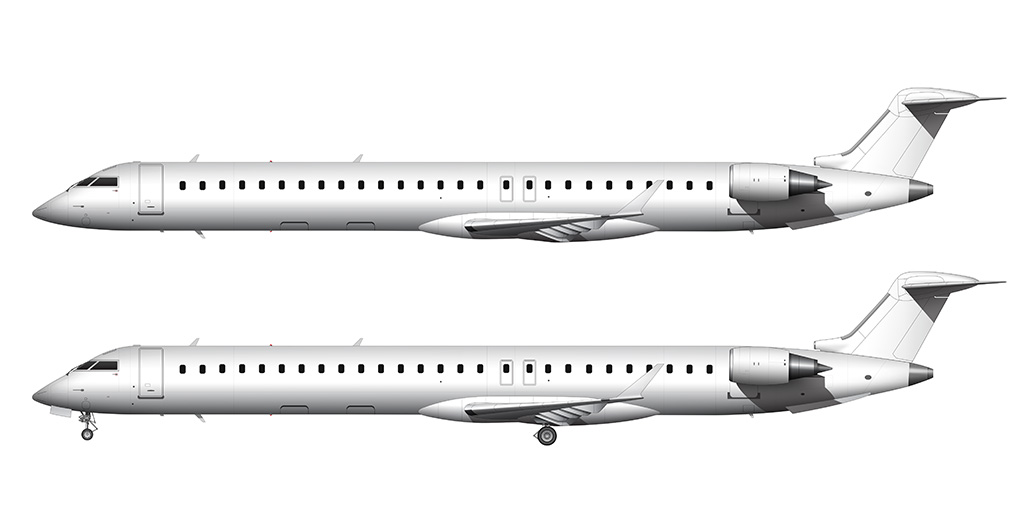
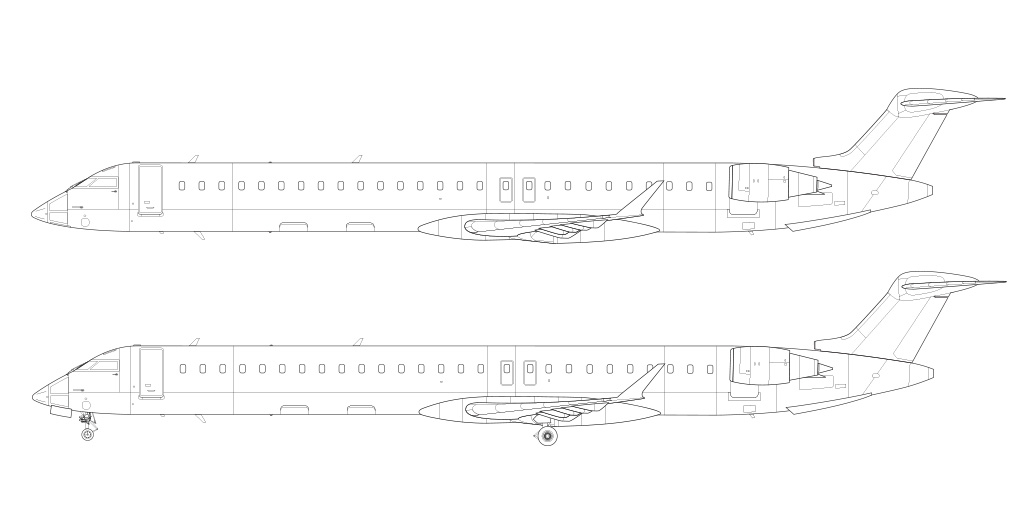

The sales figures prove it. At the time of this writing, only 63 CRJ-1000s have been built and delivered (with no more on the order books). Compare that with 487 firm orders for the CRJ-900, and 330 for the CRJ-700, and it seems as if the -1000 was never the success that Bombardier was hoping it would be.
Anyway, unlike then Boeing 737 MAX family of aircraft, the -1000 was stretched in a way that didn’t compromise it’s air worthiness. At the time of this writing, I haven’t been able to find a single incident involving one of these super-stretched regional jets. Yeah, it may look somewhat ridiculous with it’s tiny engines and wings strapped to a pencil-like fuselage, but…it was extended in a functionally-sound manner.
As a matter of fact, the CRJ-1000 outperforms the E-190 (it’s main competitor) with a higher profit margin per seat. Whether or not it performs better in terms of overall flight dynamics is something I can’t comment on. I don’t fly these airplanes. I just draw them.
How is the CRJ-1000 different than the CRJ-900?
Surprisingly, there aren’t that many visual differences compared to its smaller predecessor. Yes, I just criticized this airplane as being a cheap “shortcut” to higher profits for Bombardier, but the fact of the matter is that they stretched this airframe in the most efficient way possible:
- The wings are the same
- The engines are the same
- The winglets are slightly different. I haven’t been able to find exact specifications for them, but based on all the reference photos I looked at, they appear to be taller, slightly thinner, with a steeper rake angle.
- Three additional windows were added: two forward of the wing, and one aft
- There was a thin aerodynamic “splitter” on the CRJ-900 (located on the top of the fuselage extending from the vertical stabilizer to a point just ahead of the engines) which has been eliminated.
- Total length has been increased to 128’-5” (39.1m) to from 118’-11” (36.2m)
A brief history of the CRJ-1000
Officially launched on February 19th, 2007, the first flight of the CRJ-1000 took place on July 28th, 2009. Everything seemed to be on track and on schedule for an official entry into service taking place in 2010, but a rudder control issue was discovered discovered in early flight testing. This delayed the program for more than a year.
The CRJ-1000 eventually entered service with Brit Air and Nostrum in December 2010.
As I’ve already mentioned, this stretched CRJ-900 was never a really big hit for Bombardier. Considering that is was a “stretch of a stretch” (in the sense that the -900 was just a stretched -700), it was nothing more than a niche aircraft type at best. Other purpose-built high-density regional jets such as the E-190 and E-195 were far more popular with the airlines.

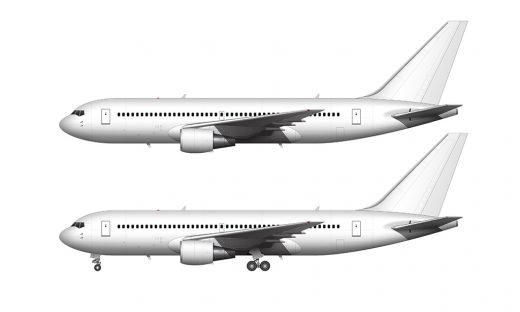
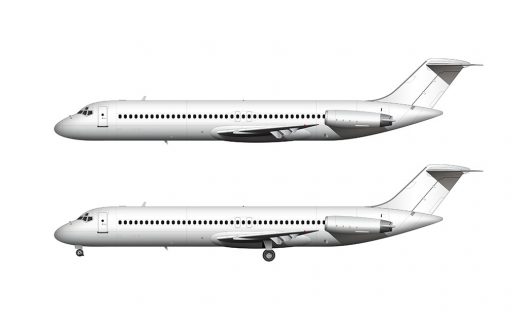
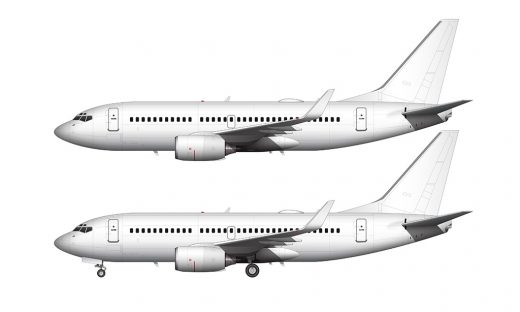
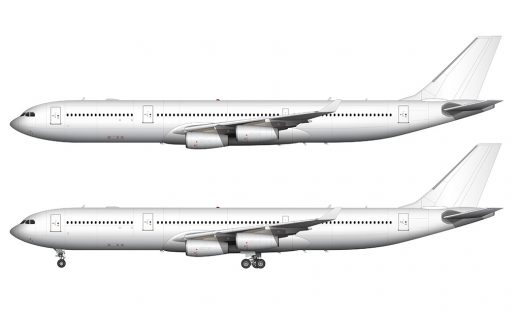
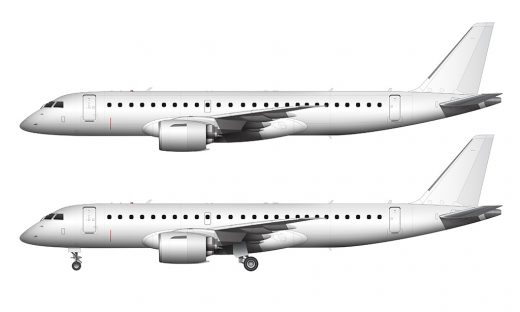
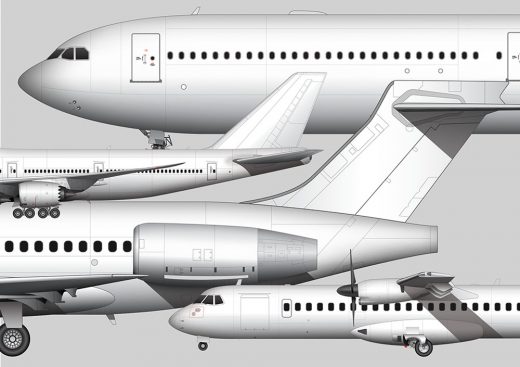
Would be a good time for another Russian aircraft maybe?
I’m thinking so as well. I’d love to do another one next!
Possibly Il-62 or Il-96?))
Maybe! Thanks for the suggestion!
Concorde? Why not?
I do want to scratch that off my list, sooooo….good suggestion!
WELL, the 777X would be the PERFECT plane!
I agree, but there is only one pre-production prototype at the moment and I’d like to see all the details finalized before I spend a ton of time creating it. 🙂
747 SP!
That one is a bit high on my wish list as well. As a matter of fact, I’ve really got to build on the rest of the entire 747 series.
I’m really excited for this one actually, as this one was the last one I needed to complete my collection of aircraft liveries. So thank you very much!
I don’t know how stupid this sounds (very, I guess), but I’d would love to have the Dornier Do 228 visualised by you. But then I know that you’re not a particular fan of those small aircraft types…
Glad you found the CRJ-1000 useful! You might just be the only one who actually needed it. lol
Anyway, the 228 looks neat! It likely won’t be my next template, but it’s probably worth doing at some point.
Airbus A321neo Airbus Cabin Flex version(ACF). With Both Engines.
Good suggestion – thanks!
I’m with Peter on this… 747 SP please. I’d love to read your thoughts on its design – is it hideous, comical or adorable? Personally I think it’s all three 🙂
Haha, I was thinking “all three” as I was reading your comment. We think alike. lol
CRJ1000s should be more common. They look great!
I’ve never been a big fan. However, I haven’t seen many in real life, so perhaps my feelings would change if they were a more common sight. It’s a rare aircraft for sure!
Do a CL-215
That’s a neat airplane! The first time I ever saw one of those was on the Ice Pilots TV show a while back – the episodes where they flew two of them transatlantic (delivering them to the new owner) was really fun to watch.